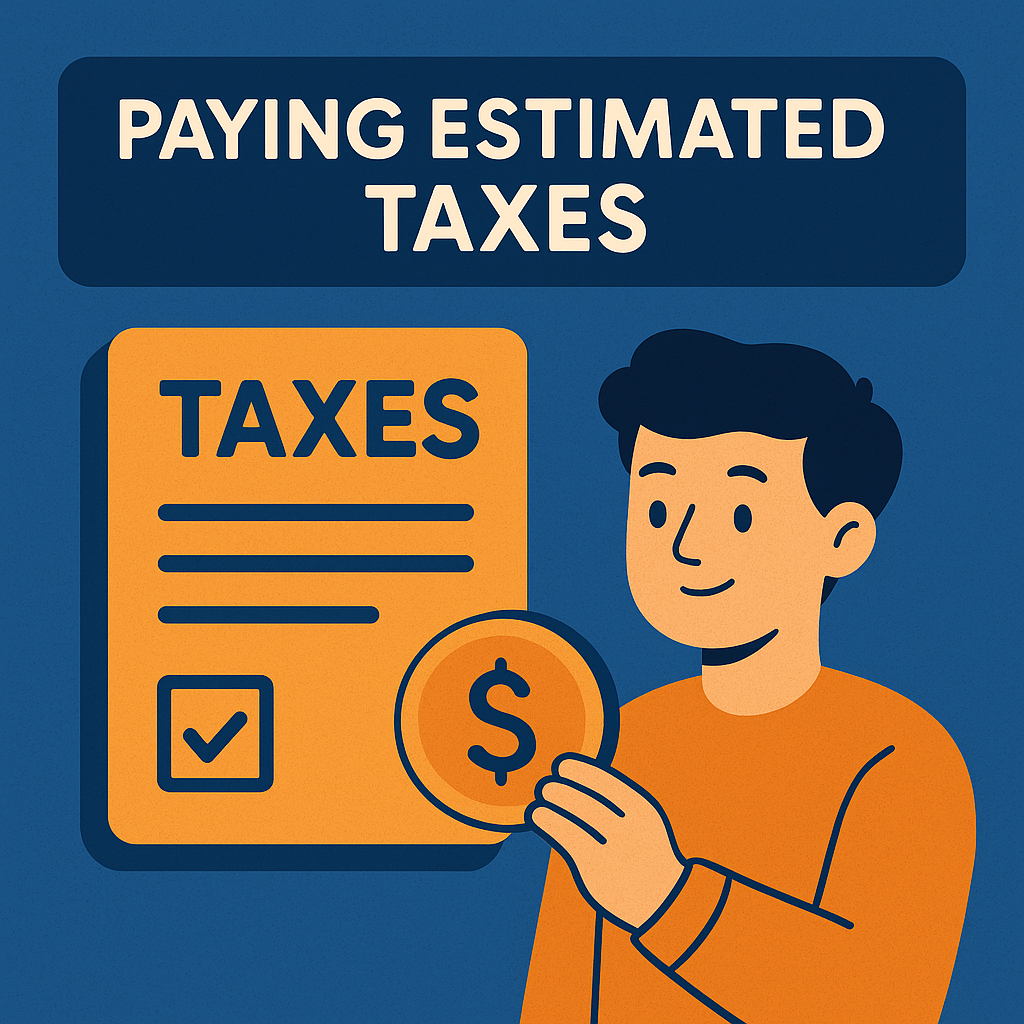How Do I Pay Estimated Taxes If I’m Self-Employed?
When you’re self-employed, taxes aren’t automatically taken out of your paycheck like they are for traditional employees. Instead, you’re responsible for calculating and paying your own taxes—and that includes making estimated tax payments throughout the year. Here’s a beginner-friendly guide to help you understand how to stay on top of your tax obligations as a self-employed individual.
1. What Are Estimated Taxes? 🤔
Estimated taxes are quarterly payments made to the IRS to cover your income tax and self-employment tax (which includes Social Security and Medicare). These payments help you avoid a big tax bill—and possible penalties—when you file your annual return.
2. Who Needs to Pay Estimated Taxes? 👩💻
You must pay estimated taxes if:
You expect to owe at least $1,000 in federal taxes when you file.
You didn’t have taxes withheld from other income sources (like a side job or retirement income).
You earn income through freelancing, gig work, owning a small business, or contract jobs.
If you’re self-employed, this likely applies to you!
3. What Do Estimated Taxes Cover? 🧾
Your estimated tax payments cover:
Income Tax (based on how much you earn)
Self-Employment Tax (15.3% for Social Security and Medicare)
So when you make quarterly payments, you’re covering both of these at the same time.
4. When Are Estimated Taxes Due? ⏰
Estimated taxes are due four times a year:
| Quarter | Income Covered | Due Date |
|---|---|---|
| Q1 | Jan 1 – Mar 31 | April 15 |
| Q2 | Apr 1 – May 31 | June 15 |
| Q3 | Jun 1 – Aug 31 | Sept 15 |
| Q4 | Sep 1 – Dec 31 | Jan 15 (next year) |
⚠️ If a due date falls on a weekend or holiday, the IRS will push it to the next business day.
5. How Do I Calculate My Estimated Taxes? 🧮
To estimate your taxes, you can use:
Form 1040-ES (includes a worksheet to help you estimate your tax based on last year’s return).
IRS Tax Withholding Estimator (a free online tool).
A tax professional or accountant if you want expert help.
💡 Tip: A common rule of thumb is to set aside 25–30% of your income for taxes, especially if you don’t qualify for many deductions or credits.
6. How to Pay Estimated Taxes 💻💵
You have several options:
Online at IRS.gov/payments using a debit/credit card or bank account.
IRS2Go App – The official mobile app from the IRS.
Mail – Send Form 1040-ES with a check or money order.
EFTPS – The Electronic Federal Tax Payment System (free and secure).
7. Avoiding Penalties 🚨
You can avoid penalties if you:
Pay at least 90% of the tax you owe for the current year, or
Pay 100% of your previous year’s tax (110% if you made over $150,000 last year).
If you underpay or miss deadlines, the IRS may charge interest and penalties—so staying on top of payments is essential!
Final Thoughts 🌟
Being self-employed gives you freedom and flexibility, but it also comes with added responsibility—especially when it comes to taxes. Making estimated tax payments every quarter helps you avoid large tax bills and potential penalties. Set reminders, use helpful tools, and if needed, get help from a tax pro to make sure you’re on track.
Staying organized throughout the year will make tax season a breeze! 💼✅
